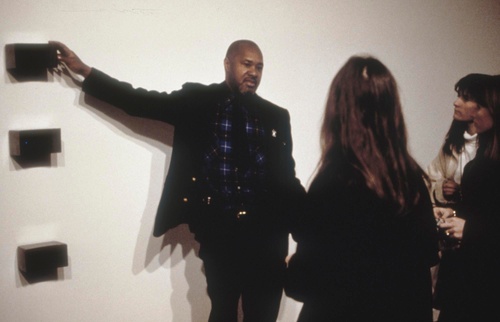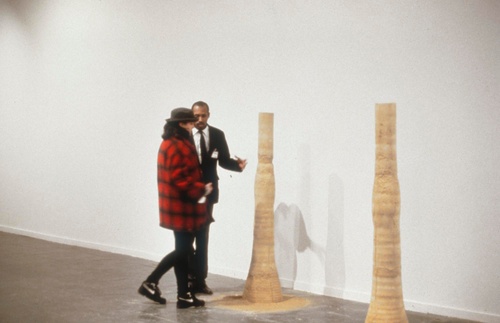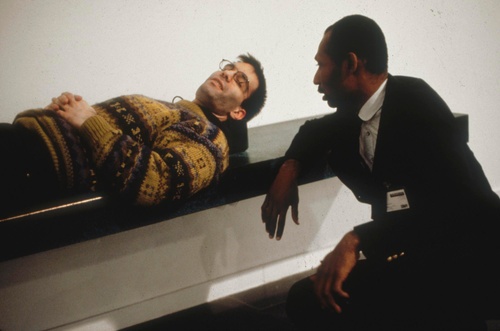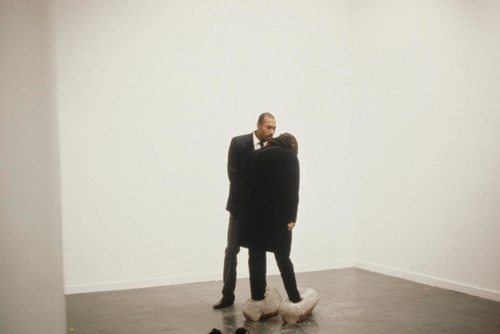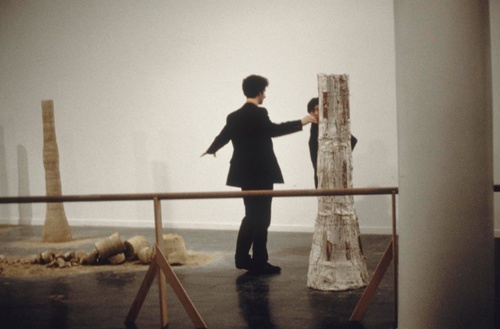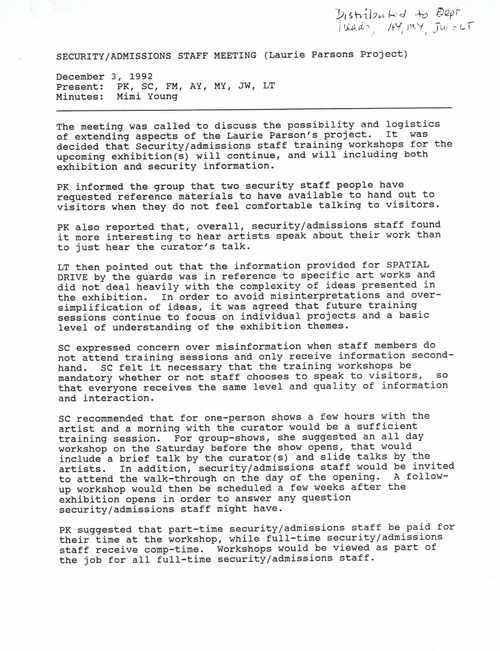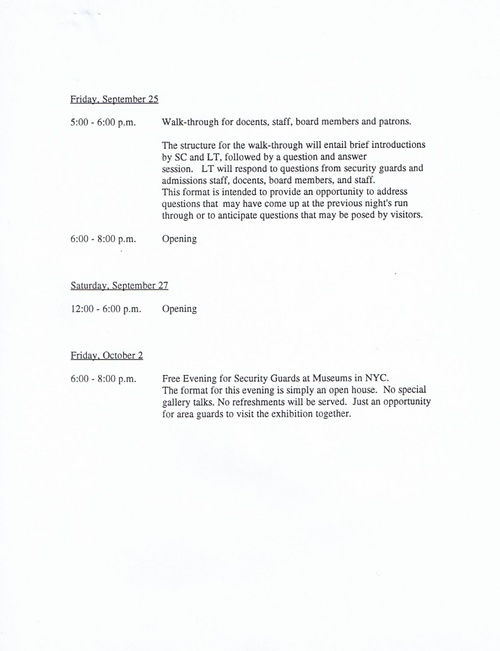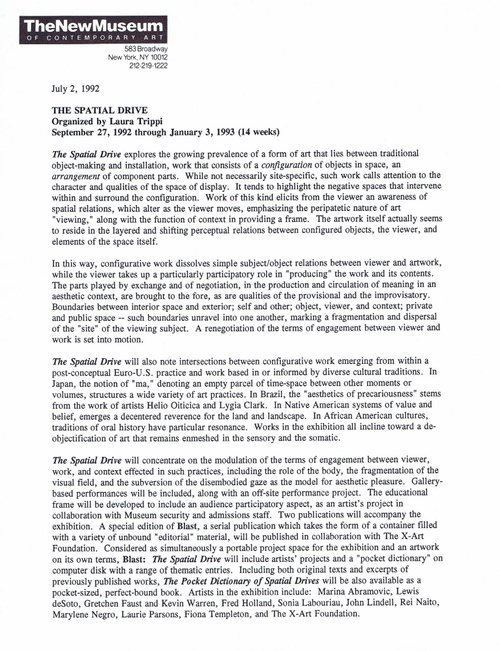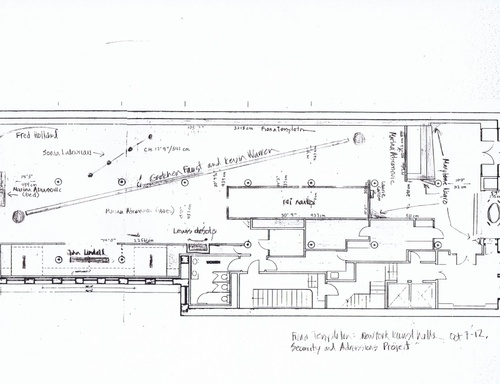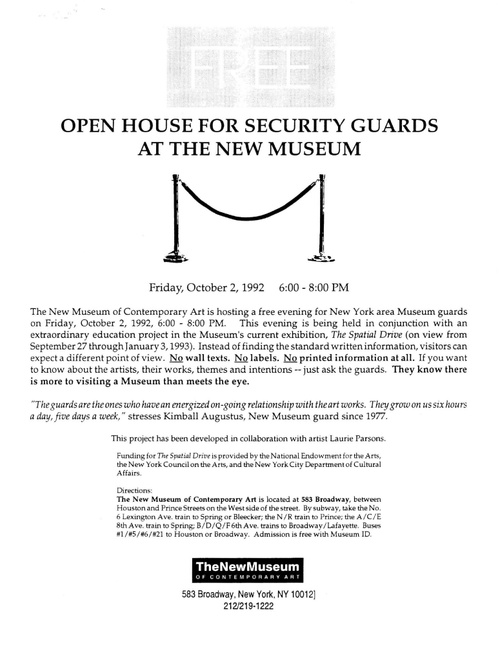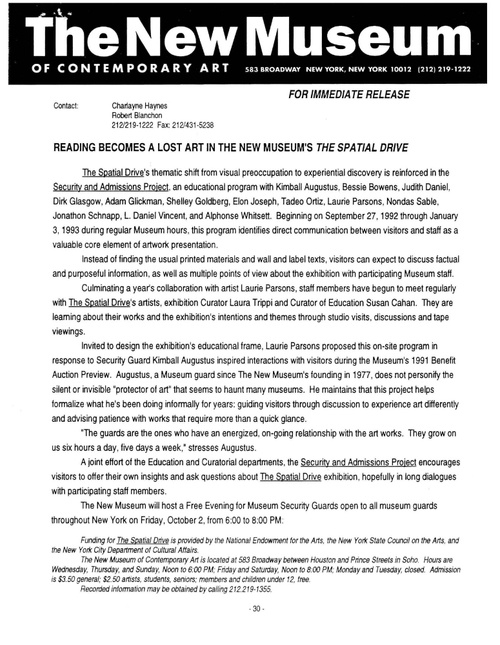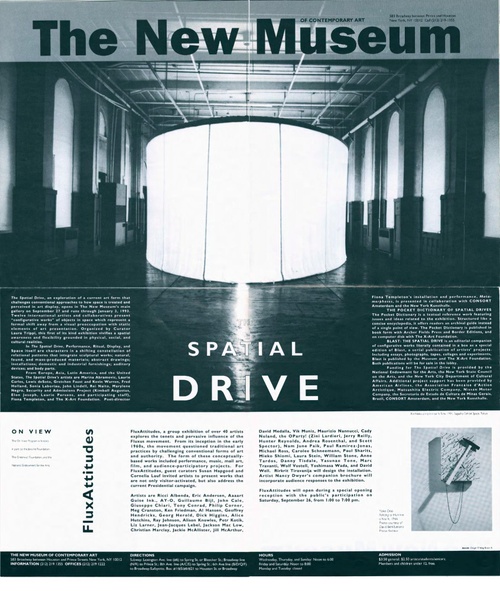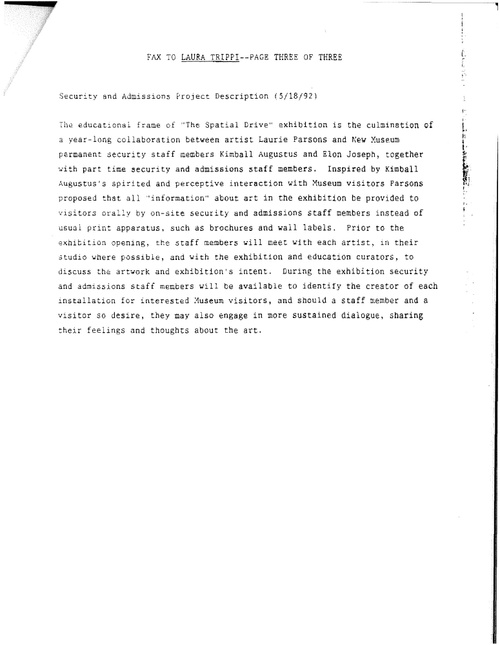The Spatial Drive: Security and Admissions Project
The Spatial Drive: Security and Admissions Project
Initiated in 1991 by artist Laurie Parsons, in collaboration with the New Museum’s Education, Security, and Admissions staff, The Security and Admissions Project began as an interpersonal artwork which encouraged informal dialogue with visitors, enhanced the educational content of exhibitions, and cultivated a congenial atmosphere in the Museum.1 The project launched in advance of the Museum’s 1992-93 exhibit “The Spatial Drive,” in which all interpretative material, including wall texts and labels, were removed from the gallery. Those wanting information could instead engage in conversation with the Museum’s security guards and admissions staff, who had all met with participating artists and curators in the months leading up to the exhibition’s opening. The project was inspired in part by Kimball Augustus, a guard at the Museum since its 1983 relocation to the Astor Building on Broadway.2 Known for his lively interactions with visitors, Augustus saw the project as helping formalize what he had been doing informally for years: guiding visitors through discussions to experience art differently. After all, he said, “The guards are the ones who have an energized, on-going relationship with the art works. They grow on us six hours a day, five days a week.”3
The Security and Admissions Project proved popular among visitors and staff, such so that it was revived for various New Museum exhibitions until 1998.4 Although descriptive texts returned to the gallery following “The Spatial Drive,” the staff-artist informational workshops continued,5 and guests were again encouraged to talk with Museum staff if they wanted to know more about the artists and artworks on display - or even if they both wanted to share their personal feelings and thoughts about the art.6 During its four years of operation, the Security and Admissions Project identified direct dialogue between visitors and staff to be a valuable, core element of artwork presentation. It brought attention to the interpersonal and social dimensions of the museum experience, and highlighted the open-ended nature of interpretation.
